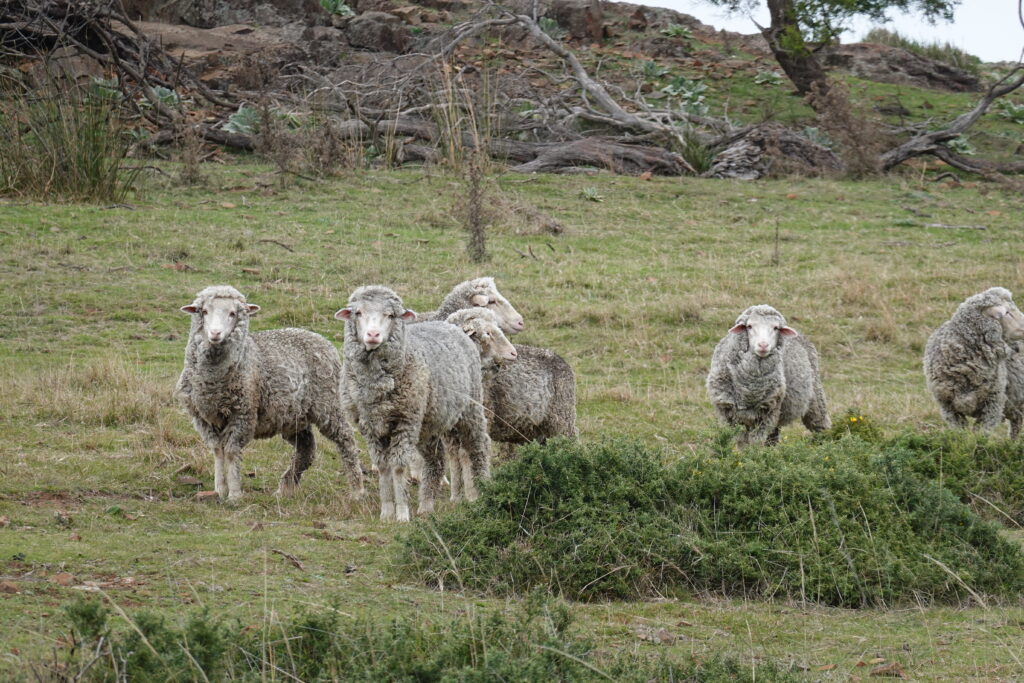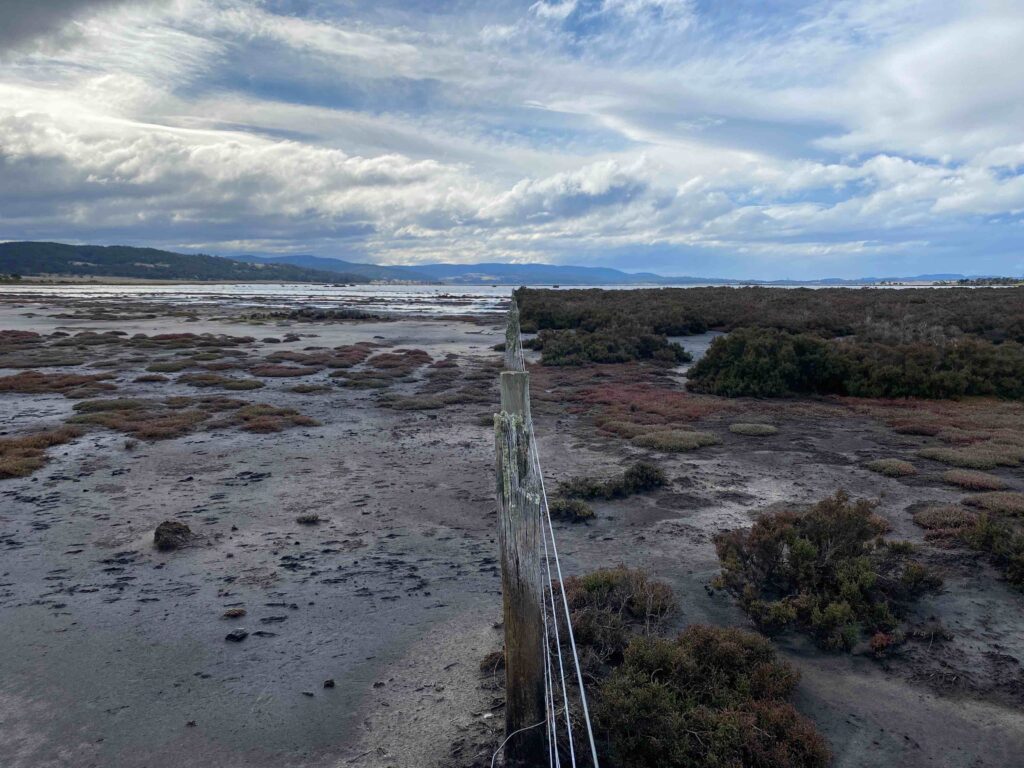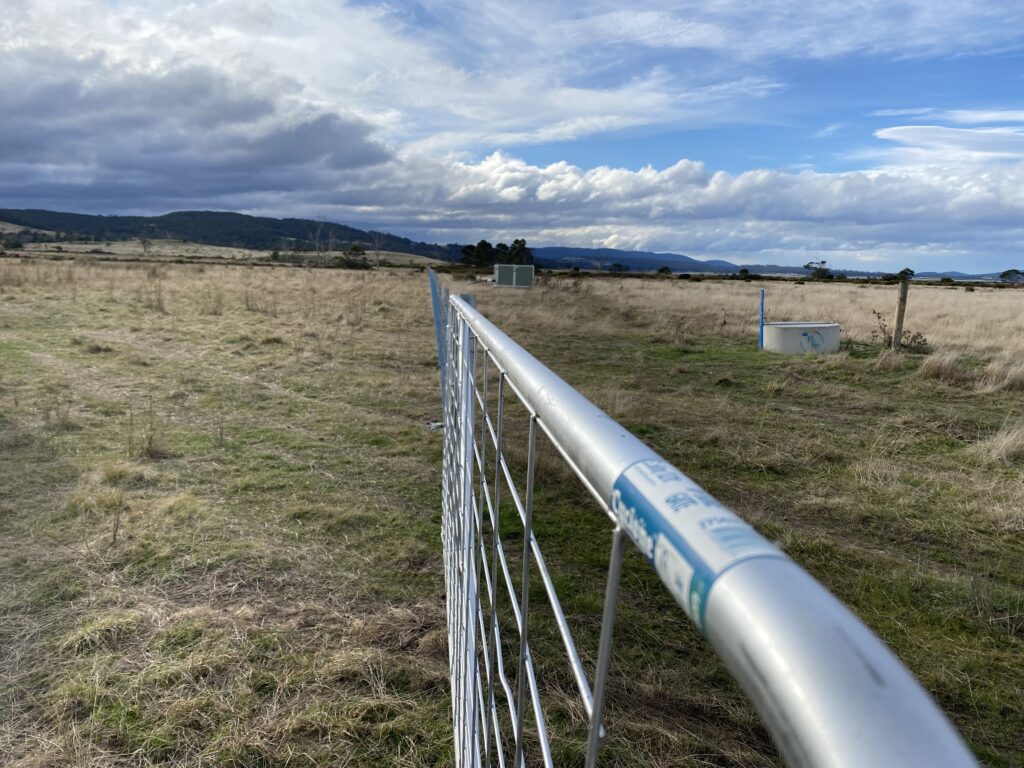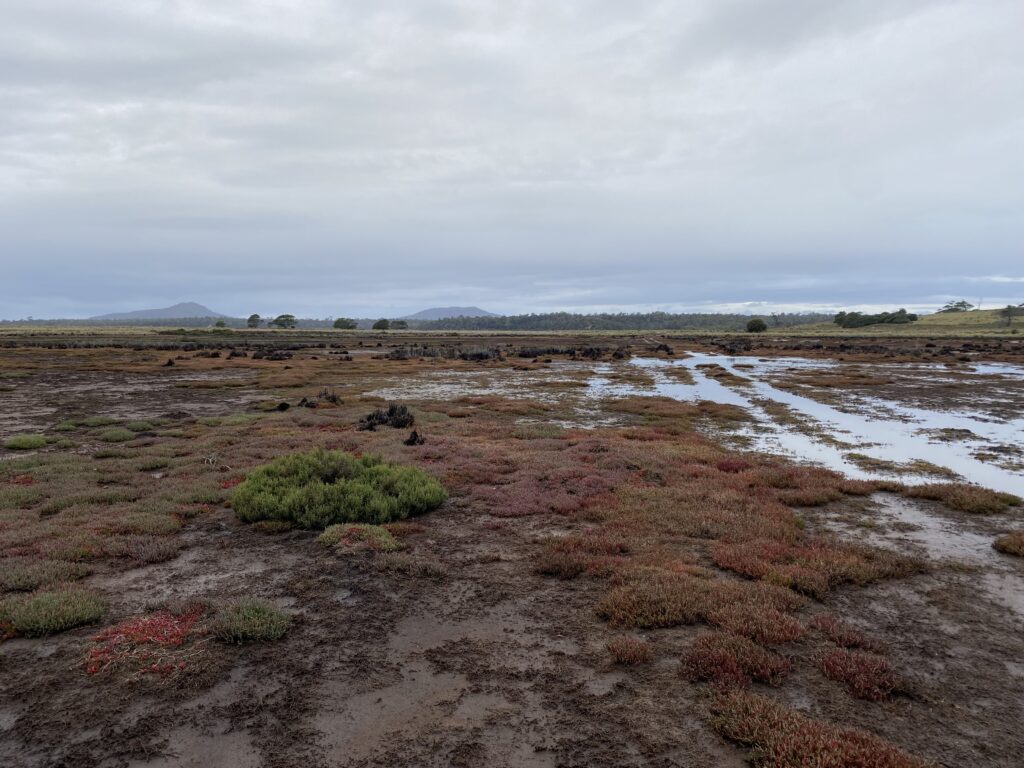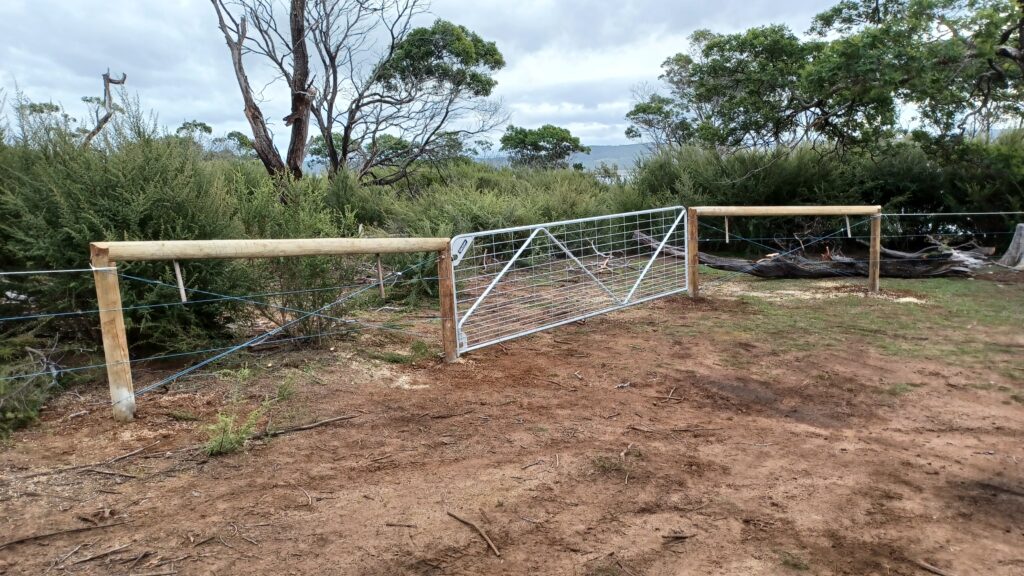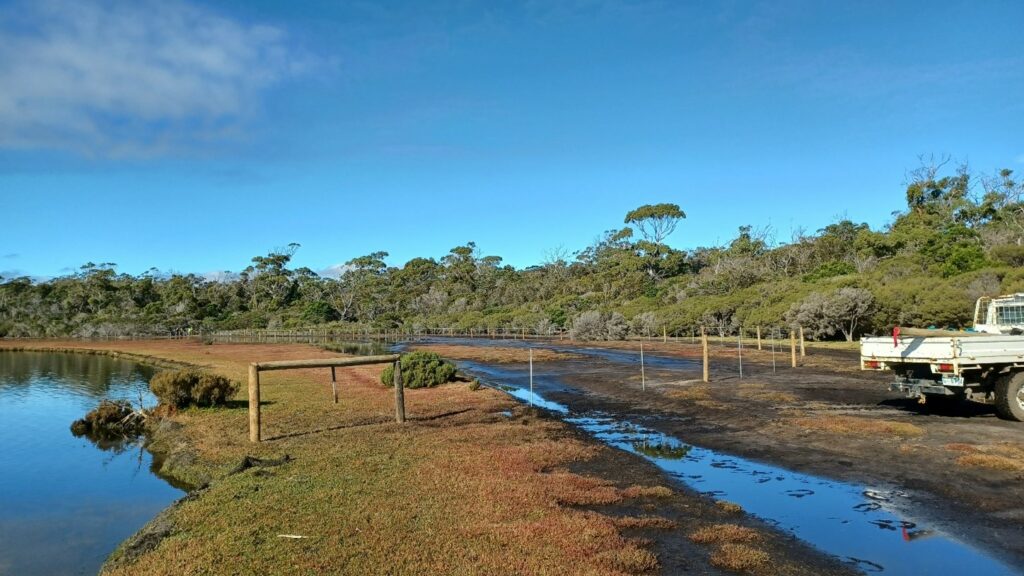Located between Swansea and Coles Bay, Moulting Lagoon is one of the most complex and extensive wetland systems in Tasmania. In 1982, Moulting Lagoon was listed as a wetland of international importance under the Ramsar Convention on Wetlands. It was recognised because its many rare and significant plants and animals, its role in maintaining biological diversity and due to its importance as spawning ground and source of food for fish. The Lagoon is one of the most extensive areas of temperate coastal saltmarsh in Tasmania, a habitat type that is listed as ‘vulnerable’ under the federal Environment Protection and Biodiversity Conservation Act 1999.
The majority of the land surrounding the lagoon is privately owned and used for grazing. Stock and human activity can harm the sensitive wetland vegetation, waterways, and bird roosting and breeding habitat. Shrubby glasswort (Tecticornia arbuscula), a saltmarsh species, is especially vulnerable. They have slow-growing woody branches, which means these bushes are easily damaged by vehicles, livestock, or people simply walking past. It is estimated that it takes around 20 years for this species to re-establish following exclusion of stock.
Maintaining or installing boundary fencing to prevent stock accessing the saltmarsh can reduce saltmarsh damage, reduce disturbance to shorebirds and minimise erosion. As part of the ‘Improving the Ecological Character of the Moulting Lagoon and Apsley Marshes Ramsar Sites’ project, NRM South and project partners, the Tasmanian Land Conservancy, Tasmanian Parks and Wildlife Services, Devil’s Corner and private landholders have worked together to install just over 7 km of fencing across land adjacent to Moulting Lagoon. Volunteers from the Wildcare Tasmania, Friends of Freycinet group, also assisted PWS with the strategic fencing of sections of the Breakfast Point foreshore on the south-eastern side of the lagoon. In total, the fencing will exclude stock from 596 ha, which will allow the saltmarsh and wetland vegetation communities to re-establish.
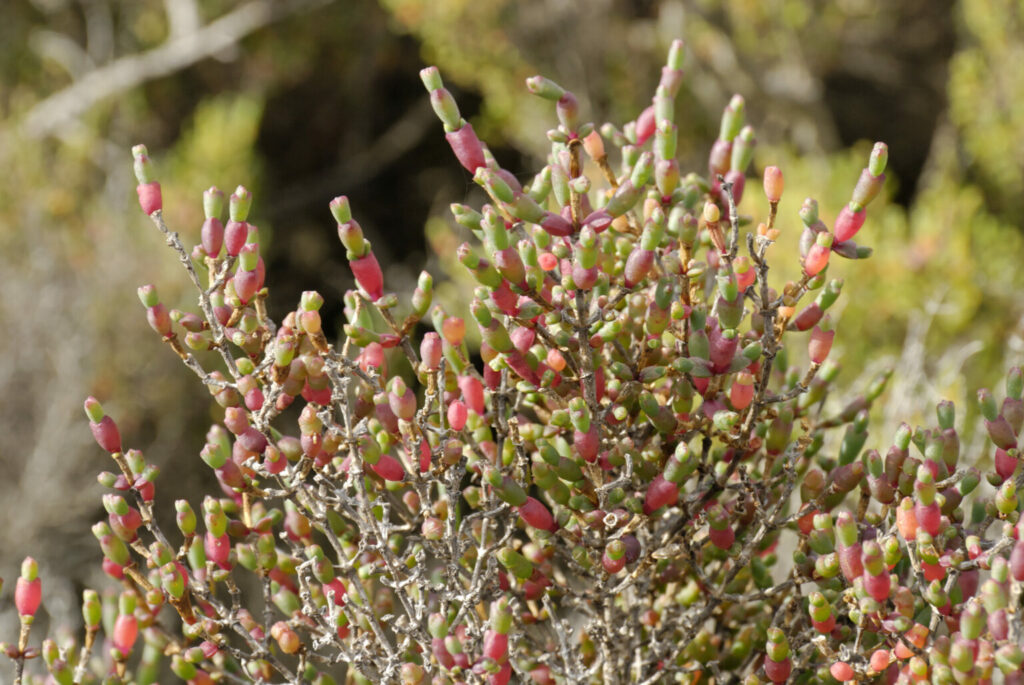
Shrubby glasswort is a fragile wetland species that can take a long time to recover if disturbed.
Maintaining or installing boundary fencing to prevent stock accessing the saltmarsh can reduce saltmarsh damage, reduce disturbance to shorebirds and minimise erosion. As part of the ‘Improving the Ecological Character of the Moulting Lagoon and Apsley Marshes Ramsar Sites’ project, NRM South and project partners, the Tasmanian Land Conservancy, Tasmanian Parks and Wildlife Services, Devil’s Corner and private landholders have worked together to install just over 7 km of fencing across land adjacent to Moulting Lagoon. Volunteers from the Wildcare Tasmania, Friends of Freycinet group, also assisted PWS with the strategic fencing of sections of the Breakfast Point foreshore on the south-eastern side of the lagoon. In total, the fencing will exclude stock from 596 ha, which will allow the saltmarsh and wetland vegetation communities to re-establish.
This project is supported by NRM South, through funding from the Australian Government’s National Landcare Program.
